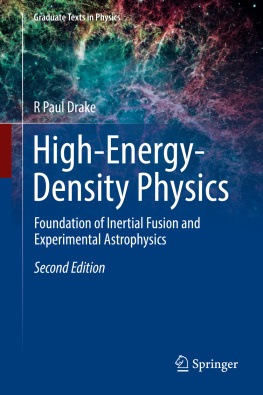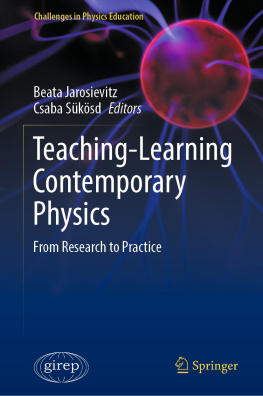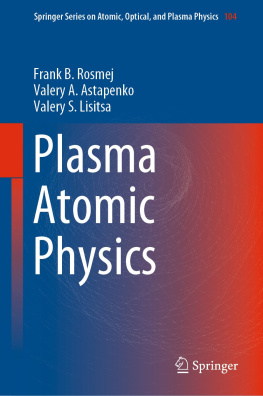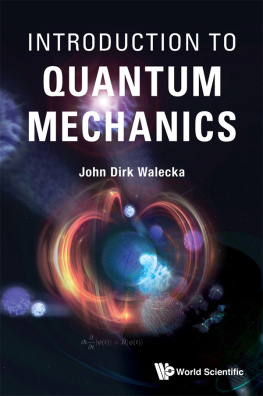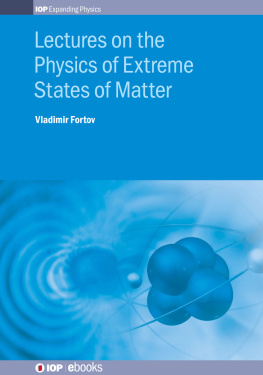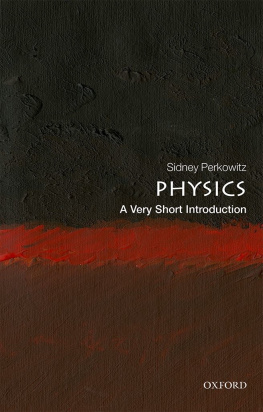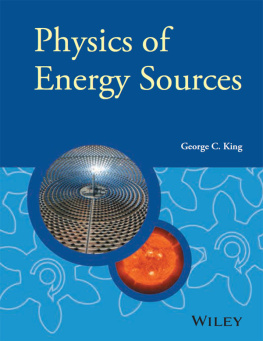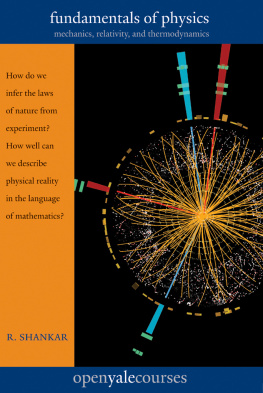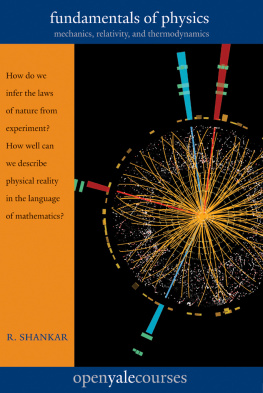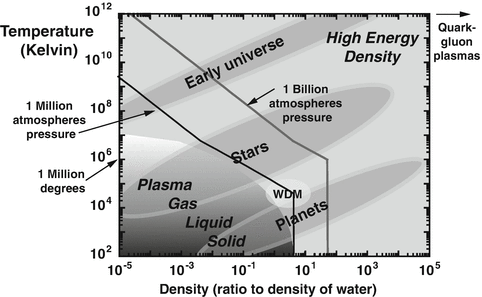1. Introduction to High-Energy-Density Physics
This book concerns itself with the physics of matter within which the density of energy is high. The first formal definition of the field, early in the twenty-first century, was in a report of the National Research Council of the United States, entitled Frontiers in High-Energy-Density Physics: the X-games of Contemporary Science . It suggested a definition of high-energy-density systems as those having a pressure above one million atmospheres. The units of this pressure can be designated by 1 Mbar, 1011 Pa, 1011 J/m3, 1012 dynes/cm2, or 1012 ergs/cm3. We will tend to express the pressure in Mbars, as this is the most common of these units found in the relevant literature. This definition reflected several observations. For example, one learned in school that solids and liquids are incompressible, but this is not strictly true. If one applies a pressure exceeding 1 Mbar to ordinary solid matter, it compresses. Another way to make this point is to say that the internal energy density of a hydrogen molecule is 1 Mbar.
Thinking further, one might realize that once the energy that holds a collection of particles together, whether as applied pressure or as binding energy , becomes of the order of the internal energy of the molecules and atoms, their behavior will change. Beyond this point, the system will behave more as ions and electrons than as neutral particles. In the decade since the definition suggested above, it has become clear that solid matter exhibits novel behavior once the medium begins to ionize, creating free electrons. This can occur at a pressure as low as about 0.1 Mbar. This has led some researchers to suggest revising the above definition by lowering the threshold pressure. But in the absence of newly freed electrons, one does not get any novel behavior. In addition, the field as it functions includes the study of plasmas produced using devices that can create high-energy-density conditions, even when their density of energy is somewhat smaller. So the present author suggests the following revised definition of high-energy-density physics:
High-energy-density physics is the laboratory study of matter that has a pressure of at least 0.1 Mbar (10 Gpa) and contains free electrons not present in the solid state, and of lower-pressure matter produced using experimental systems that can produce pressures above 0.1 Mbar.
Figure . Finally, quark-gluon plasmas are a form of high-energy-density matter produced by colliding relativistic heavy ions. They have a temperature of order 1012 K, and a density far to the right of those shown here.
Fig. 1.1
Connection of the high-energy density regime to other physical and astrophysical systems
We will discuss some further aspects of the transition into the high-energy-density regime in Sect. discuss how radiation affects it.
Chapter are essential to presenting a comprehensive and comprehensible discussion. For example, one might launch a shock wave that converts ordinary matter into high-energy-density matter. Such shock waves have velocities above 10 km/s. At constant pressure, shock velocities increase as density decreases, so that shock waves above 100 km/s (>360,000 km per hour) are common in high-energy-density physics. Alternatively, one might produce an intense beam of photons, electrons, or ions that can penetrate the matter and directly heat it, and particle beams themselves may reach this regime.
High-energy-density physics encompasses more than the regime of dense plasma, in the sense just described. It also includes conditions in which pressures >0.1 Mbar result from very high temperature at very low density. For example, air at a density of 1 mg/cm3, of the order of atmospheric density, reaches a pressure of 0.1 Mbar at a temperature above 1 keV. (Throughout this text we express temperature in the energy unit of an electron Volt, so that the Boltzmann constant is 1.6 1012 ergs/eV or 1.6 1019 J/eV.) A temperature of 1 keV is roughly 10 million Kelvin, so that temperatures of millions of Kelvin or more are common in high-energy-density physics. As the density decreases further, conditions in which the pressure remains above one Mbar soon become relativistic, and thus also outside the realm of traditional plasma theory. Overall, what high-energy-density systems have in common with traditional plasmas and with condensed-matter systems is that collective effects are an essential aspect of the behavior. The difference from traditional plasma physics is that the particles are more correlated, and/or relativistic, and/or essentially radiative. The difference from traditional condensed-matter physics is that ionization and Coulomb interactions are essential. Various chapters that follow are focused on one or more aspects of these differences.
The present text was the first book to be written as a textbook in high-energy-density physics. (We place it in the context of prior work later in this chapter.) This reflects the fact that high-energy-density physics is in some sense a new field. One can see that the regimes just discussed offer some challenges beyond established areas of physics, but one might wonder both in what sense this is new and why. The material discussed here, as in condensed-matter physics and other areas, is entirely built on the foundations of classical and modern physics as established from the mid-nineteenth to the mid-twentieth century. In addition, much of the material discussed herein is discussed in more depth in one of a dozen or so more-advanced books. The fundamental sense in which this is a new area is that there are new tools and that new tools beget new areas of science. It is now practical for scientists in an academic or laboratory setting to perform experiments to study the fundamental behavior of high-energy-density systems over a significant range of parameters. This creates a need for the treatment of this material as an integrated subject, moving from fundamentals to their applications, for the presentation of the material in a common voice suitable for graduate courses and as a first working reference, and for a discussion that spans the range of conditions now (or soon to be) available for study. Hence the emergence of high-energy-density physics as a distinct field and hence this text.
1.1 Some Historical Remarks
Let us consider the new tools and some key people that brought this about, with the goal of giving the flow of key developments as opposed to a thorough historical review. The development of spectroscopy and modern astronomy in the later nineteenth century led Eddington, Schwarzschild, Chandrasekhar, and others to seek to understand the structure of stars through the first half of the twentieth century. Key outcomes of this work included the theory of the radiative transfer of energy, discussed in Chap.. The development of particle accelerators in the 1930s began the effort to focus large numbers of particles to small areas. The advent of nuclear weapons in the 1940s produced high-energy-density conditions, but not in a way that permitted systematic study. The development of the light-gas gun in the 1950s and 1960s eventually led to the ability to study matter at the low-pressure edge of the high-energy-density regime. These were all key technical developments, but it was the invention of the laser that most directly led to the emergence of this field.

